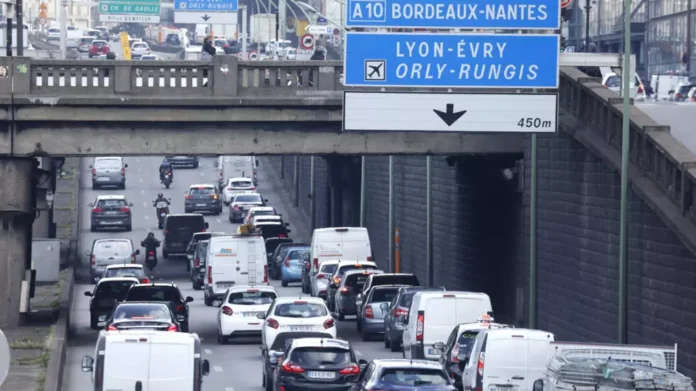
In a bold move set to reshape the driving experience in Paris, Mayor Anne Hidalgo announced that the capital’s crucial ring road, the Boulevard Périphérique, will see a significant reduction in the speed limit to 50 kilometres per hour (30 miles per hour) starting October 1.
The decision, which Hidalgo described as the culmination of 18 years of work, has ignited a storm of criticism from various quarters, including drivers, conservatives, and even some within the national government.
The Boulevard Périphérique, often referred to as the ‘Periph,’ is a vital artery for road travel in the Île-de-France region, connecting Paris with its suburbs and beyond. Hidalgo’s announcement, made during an interview with broadcaster RTL, has been met with resistance from those who argue that the move will exacerbate traffic congestion and inconvenience motorists.
“The 50 kph (limit) is my decision. It will happen on October 1. We’ve been working on it for 18 years, this isn’t a new topic,” Hidalgo emphasized.
The proposed speed limit reduction has been under discussion since January, with the city hall planning to implement it post-Olympic and Paralympic Games, which concluded on Sunday. However, the plan has yet to receive formal approval from the national government and Paris’s police chief, Laurent Nunez.
The French transport ministry has argued that only the government has the authority to alter speed limits through an official decree, given that national regulations govern road safety. This stance has added a layer of complexity to Hidalgo’s proposal.
Additionally, Nunez has voiced concerns about the unilateral nature of the decision, which he claims disregards prior recommendations on managing the Periph.
The announcement has also drawn criticism from members of the Conservative Republicans on the Paris city council. They contend that Hidalgo’s plans were made without adequate consultation and fail to address the practical implications of reducing the speed limit.
“The decision does not respect any of the recommendations from past reports on the Periph,” they stated on X.
Despite the backlash, proponents of the new speed limit argue that the measure is in the public interest. David Belliard, deputy from the Green party and an advocate for the speed reduction, highlighted the benefits observed from a previous decrease from 80 to 70 kph.
He cited improvements in noise pollution and a reduction in accidents, supported by data from the environment agency Ademe.
Belliard also suggested that a lower speed limit would enhance traffic flow by reducing the effects of stop-start driving and the associated acceleration and deceleration.
“Lowering the maximum speed means limiting stop-start driving and acceleration and deceleration effects, which makes traffic move more smoothly,” Belliard asserted.
As Prime Minister Michel Barnier and his newly appointed ministers weigh in on the matter, the future of Hidalgo’s plan remains uncertain.
The outcome of this political and administrative standoff will determine whether the new speed limit will become a reality or remain a contentious topic in the ongoing debate over urban traffic management in Paris.